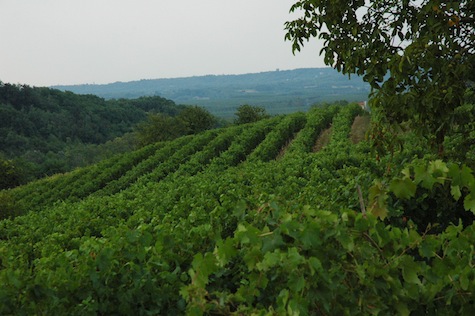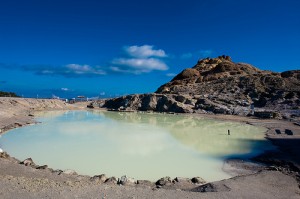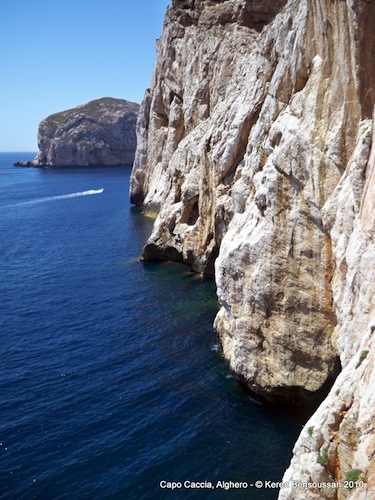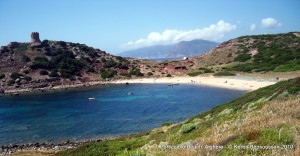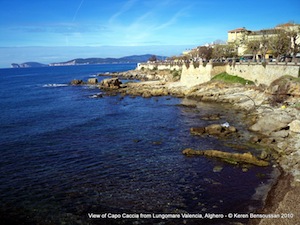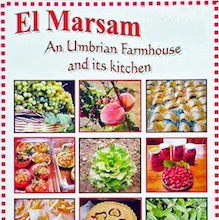Archive for the ‘gita italiana’ Category
Gita Italiana 2010: Mountains & Sea: Between Two Worlds on Italy’s Amalfi Coast
 Next stop on the Gita Italiana 2010 is one of the most popular parts of Italy — and rightfully so judging from these photos and words! Here comes Laura of Ciao Amalfi!
Next stop on the Gita Italiana 2010 is one of the most popular parts of Italy — and rightfully so judging from these photos and words! Here comes Laura of Ciao Amalfi!
Mountains & Sea: Between Two Worlds on Italy’s Amalfi Coast
Postcard images of seaside villages with pastel houses climbing up steep mountainsides, rocky beaches with unimaginably blue waters, beaches lined with brightly colored umbrellas—these are the picturesque images that define Italy’s Amalfi Coast. Those of you that have visited this beautiful part of Italy will agree with me when I say that it’s even more extraordinary than any photograph could possibly capture.
The mountains soar—rocky edges outlined against the blue sky— forming a seemingly unreal backdrop high above the famous seaside towns of Amalfi and Positano. The Lattari Mountains form the backbone running down the Sorrento Peninsula separating the southern coastline, called the Amalfi Coast, from the northern coastline on the Bay of Naples. Home to wild boars and rare plant species, these mountains are lush, rich and mysterious. They are the other side of the Amalfi Coast – a landscape of strong contrasts where the scent of pine trees lingers in the fresh, salty breeze.
When winter storms come rolling in, they cling to the top of those mountains as if afraid to continue out to sea. Yet, the sea welcomes those mountains, with sharp edges plunging into the blue waters. Somewhere in between, the sea and the mountains meet to create the unique landscape and lifestyle of the Amalfi Coast.
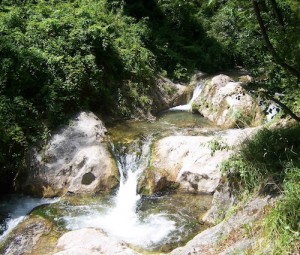 High above Amalfi, the Valle dei Mulini (Valley of the Mills) climbs into a magical and completely unexpected mountain landscape. Hiking up from the center of Amalfi, you soon pass the ruins of the town’s once thriving paper mills, which supplied fine quality paper all over southern Italy in the Middle Ages. Soon you enter another world, where pure, ice cold water from the high mountain source rushes through little pools. Then you’ll reach a point where the waterfalls bring to mind tropical rainforests rather than the rugged Amalfi Coast. At that moment the nearby sea and rocky beaches seem a world away.
High above Amalfi, the Valle dei Mulini (Valley of the Mills) climbs into a magical and completely unexpected mountain landscape. Hiking up from the center of Amalfi, you soon pass the ruins of the town’s once thriving paper mills, which supplied fine quality paper all over southern Italy in the Middle Ages. Soon you enter another world, where pure, ice cold water from the high mountain source rushes through little pools. Then you’ll reach a point where the waterfalls bring to mind tropical rainforests rather than the rugged Amalfi Coast. At that moment the nearby sea and rocky beaches seem a world away.
These two sides of the Amalfi Coast are also represented in the regional cuisine. In the villages along the sea, specialties are based on mare (sea) and the abundant seafood, while up the mountains you’re more likely to find dishes based on terra (earth). As you drive higher in the mountains to the villages of Scala, Ravello and Tramonti, you’ll find a landscape covered with chestnut trees and traditional dishes featuring salsicce and locally foraged funghi.
When people ask me for advice for visiting this beautiful part of Italy, I encourage them to try to experience both sides of the Amalfi Coast. Spend time swimming in the incredible waters and looking up at the towering mountain backdrop. But, if you have time, get up in the mountains, go hiking and experience the other side of the Amalfi Coast. For me, I feel as if I truly began to understand the Amalfi Coast’s beauty, culture and lifestyle when I began to explore the mountains and looked down on the tiny villages overlooking the Mediterranean Sea.
*
Laura Thayer is an art historian and freelance writer living on the Amalfi Coast in Italy. She is currently co-writing a novel set in Italy with her mother and writes about life on the Amalfi Coast at her website Ciao Amalfi. Photos © Laura Thayer, Ciao Amalfi!
*
Grazie mille Laura!
Tomorrow we’ll be headed to Florence, so be sure to come back!
Gita Italiana 2010: Piemonte: Beautiful, Colorful and Tough
 For the next stop in the Gita Italiana 2010, we’re heading up to visit with Diana Strinati Baur of DianaBaur.com in beautiful Piemonte.
For the next stop in the Gita Italiana 2010, we’re heading up to visit with Diana Strinati Baur of DianaBaur.com in beautiful Piemonte.
Piemonte: Beautiful, Colorful and Tough
I was in a funky little shoe store in Genoa awhile back. The girl that was helping me, a sweet little pea who had clearly spent every non-working, non-sleeping hour perfecting her tan on the beach in Nervi, asked where I came from. I told her that I was American, but living in southern Piemonte. Her eyes widened.
“Che duro,” That’s tough, she responded. I looked at her in surprise. Had she ever been there? After all, it’s only an hour from Genoa, the town where I live. “Mai!” never – with a an expression that clearly said to me, now why would I ever in a million years go there?
It’s funny how little people really know about where I live. Italians often see Piemonte as the North Pole of Italy, because it’s surrounded by snow-covered Alps. They see it as remote, save Torino, where so many from the central and southern parts of the country once came to work for Fiat, in the days when the company had over one hundred thousand workers from all over the boot.
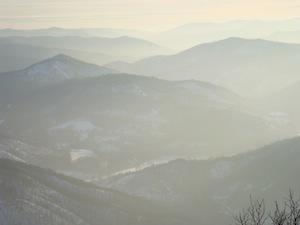 Non-Italians often only associate one thing with Piemonte – Barolo. And often, it’s knowledge from a safe distance – Barolo is a wine with its price and for which a great deal of time and trial must be invested to truly understand and appreciate.
Non-Italians often only associate one thing with Piemonte – Barolo. And often, it’s knowledge from a safe distance – Barolo is a wine with its price and for which a great deal of time and trial must be invested to truly understand and appreciate.
Of course, none of these paradigms begin to do Piemonte justice. To begin to understand what Piemonte is, it’s actually easier to start with the short list of what Piemonte is not.
Piemonte is not the beach. Unlike so many Italian regions, not a lick of salt water touches Piemonte’s borders. If it’s sandy Mediterranean or Adriatic coastline you are looking for, you would be better off looking elsewhere.
Piemonte is not Renaissance or Baroque Art. Please, oh, please don’t come here looking for Caravaggio or DaVinci. If we have any of these works of art, they are usually on loan from Florence or Rome.
Ok, now that that’s handled we can finally get to what Piemonte actually is.
Piemonte is stunningly beautiful. Ok, this might seem like a subjective statement, but the truth is that the ocean is the only thing we don’t have. We have beautiful lakes, Orta and Maggiore, that are surrounded by the western portion of the Alps (also part of the Piemontese landscape). The Lake Region is a combination of hip, historic, traditional and overwhelmingly majestic.
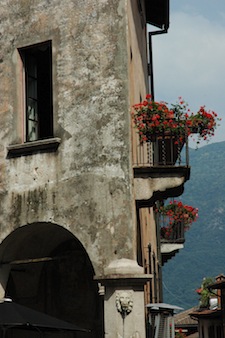 Speaking of the Alps, the Gran Parco Paradiso is in the shared regions of Piemonte and Val d’Aosta. A short ride from the flatlands of Cuneo will bring you to Limone Piemonte, where the skiing is great and the views are even better. Valle di Susa and Sestriere, Bardoneccia and many other famous ski resorts are all within Piemonte’s borders.
Speaking of the Alps, the Gran Parco Paradiso is in the shared regions of Piemonte and Val d’Aosta. A short ride from the flatlands of Cuneo will bring you to Limone Piemonte, where the skiing is great and the views are even better. Valle di Susa and Sestriere, Bardoneccia and many other famous ski resorts are all within Piemonte’s borders.
But of course, the most beautiful part to me is where I live, the wine country. We have over 70,000 hectars of vineyard, with over half of them registered as either DOC or DOCG (the largest DOC land registration in Italy). We have vast kiwi, hazelnut, walnut and cherry plantations. The geographic makeup of Piemonte is mixed agricultural combined with woodland, a fact that helps make it so beautiful.
Piemonte is the best food in the country. Ok. Relax, Umbria and Emilia Romagna. You too, Sicily. But seriously, this area takes the best of what Italy and France has to offer, spins the two together and produces some of the most amazing flavor combinations imaginable. It also helps that the selection of over 39 DOC wines to choose from. As the great Marcella Hazan states on her website Made In Italy:
Great wines come from (Piemonte) and it’s not a coincidence that the land that produces a great wine also produces a great cuisine.
Piemonte is part of the economic heart of Italy. It produces 8.4% of the country’s national wealth, is the cradle of the country’s auto production and invests 1.8% of its GDP back into innovation and science every year.
Piemonte is stylish and sophisticated. People often are shocked on their first visit to Torino. They somehow expect an industrial backwater. What they find is a city that is more European than strictly Italian, with fabulous shopping arcades, a gorgeous river promenade, great museums, a lively University district, great restaurants, and perhaps the most interesting café culture outside of Paris.
That sophistication trickles down to all of the smaller cities. Alba, heart of the Langhe wine region, has a wonderful pedestrian shopping district with local products and designers; the same can be said for Alessandria, Acqui Terme, Asti, Verbania, Stresa, Novara, Casale Monferrato, Cuneo and a myriad of other large towns that boast a cultured and colorful lifestyle.
Piemonte is the home of the first Italian. Piemonte is the birthplace of Italy as a singular nation. Count Camillo Benso di Cavour, who designed the contitutional structure for a unified Italian state, and for whom every town in the country has a street named, was Piemontese. Another notable street-name-worthy Piemontese: Vittorio Emmanuele II, the first King of Unified Italy.
Piemonte is close to France and Switzerland. This is not only handy for me, as a bed and breakfast owner catering to an international audience, but it’s handy for Piemonte as well, since it means that the region has a definite international flair. Our dialect reflects our proximity to France, as does our cuisine. The region is steeped in Napoleonic and Savoy history.
In short, with the exception of just a couple of details, Piemonte is what Italy is. Colorful. Strong. Proud. And yes, it’s sometimes tough as well. But that invariably comes with the territory and the culture of a land rich in tradition and history.
*
 Diana Strinati Baur is an American writer, artist, life coach and innkeeper living and working in Northwestern Italy. In 2003, she and her husband sold everything and bought an abandoned Moscato farm in Acqui Terme, Piemonte, Italy, transforming the derelict property into an elegant, top rated bed and breakfast. She used her day journals as the basis of her first blog, and has written two books: Your Truth – Changing the Path Back To Yourself, a self-published ebook about embracing risk and life change as a motor for personal growth, and True Vines, a novel to be published by Gemelli Press in October of 2012. Diana sells her hand crafted ceramics internationally.
Diana Strinati Baur is an American writer, artist, life coach and innkeeper living and working in Northwestern Italy. In 2003, she and her husband sold everything and bought an abandoned Moscato farm in Acqui Terme, Piemonte, Italy, transforming the derelict property into an elegant, top rated bed and breakfast. She used her day journals as the basis of her first blog, and has written two books: Your Truth – Changing the Path Back To Yourself, a self-published ebook about embracing risk and life change as a motor for personal growth, and True Vines, a novel to be published by Gemelli Press in October of 2012. Diana sells her hand crafted ceramics internationally.
Photos © Diana Baur.
*
Grazie mille Diana!
Tomorrow we’re headed south to the Amalfi Coast, so please come back!
Gita Italiana 2010: Visiting the Aeolian Islands from Calabria
 From Sardinia yesterday, today we’re going to island hop with my fellow Calabria resident Cherrye Moore of My Bella Vita:
From Sardinia yesterday, today we’re going to island hop with my fellow Calabria resident Cherrye Moore of My Bella Vita:
La Gita Italiana: Visiting the Aeolian Islands from Calabria
The idea of una gita Italiana is tempting, not only to our far-flung friends and family, but also for those of us who call this country home. I’ve written before about how deceptively difficult it is here in Calabria to pull yourself away and travel to other parts of the bel paese.
Not only is travel expensive and transportation slow, but since we live here, jobs, duties and responsibilities take precedent and unfortunately for the wanderlust in our hearts, travel plans are put on hold.
However, I recently heard of a — dare I say — easy, day trip you can take from several points in Calabria to the enchantingly beautiful Aeolian Islands.
This mini-cruise day trip has been active for years, but in the past, passengers had to be in either Vibo Valentia or Tropea early in the morning to catch the boat for their day-long cruise. If they weren’t staying in these cities, they’d have to wake up even earlier, drive from their hotel or B&B, locate the marina, find appropriate parking-and still be ready to set sail by 6 or 7 AM.
Luckily, some of that has changed.
Travelers can now take a charter bus from almost 40 different bus stops across Calabria, on both the Ionian and Tyrrhenian coasts-and easily catch their morning departure in Vibo.
From Vibo Valentia, the cruise heads to Lipari-the largest and liveliest island, where you can visit the beaches, take a bus tour of the island or shop.
After a short break on Lipari, the ship sets sail for Vulcano, most known for its sulfuric mud baths.
After lunchtime, the cruise departs for its final stop-Stromboli, the second largest active volcano in Europe-after its Sicilian cousin, Etna-and home to the famous Sciara del Fuoco, which can only be seen on night tours of the islands.
Most people who have been to the Aeolian Islands agree you need to plan at least an overnight trip, but the mini-cruise is a fun way to sample the islands while providing day trippers with a memorable experience of these famous Sicilian islands.
*
Cherrye Moore is an American freelance writer and Calabria tour consultant living in Catanzaro, Calabria. You can read about traveling in Calabria on her site, My Bella Vita, and also join her on a epicurean adventure via the Calabrian Table Tour in October.
*
Grazie mille Cherrye!
Be sure to come back tomorrow when we’ll be traveling to the opposite end of the boot — to Piemonte!
Gita Italiana 2010: Finding Treasures in Alghero, Sardinia
 Welcome to our first stop on the Gita Italiana 2010! Today we’re hanging out in Alghero, Sardinia with my friend Keren Bensoussan of The Road Less Travelled.
Welcome to our first stop on the Gita Italiana 2010! Today we’re hanging out in Alghero, Sardinia with my friend Keren Bensoussan of The Road Less Travelled.
Finding Treasures in Alghero
After having travelled all over Italy, I was finally called to Sardinia, Italy’s island famous for its emerald sea.
I was offered work so I accepted, but not after seriously questioning how long I could survive on an island. I am a city girl after all, but the airport was only 15 minutes away, and that sealed the deal.
My first days in Alghero were wonderful. It was like being in paradise. Tall trees fanned the streets with their delicate green leaves; the quiet sea glistened with sunshine diamonds in mountainous horizons, and I could walk through Alghero’s “central park” at ease, safe in a mother Alghero’s arms. I felt young, innocent, even slightly vulnerable, which made me wonder, “what is going on here?”
A week later I ran into my landlord.
“Ciao, Keren! Come va la prima settimana in Alghero?”
(“Hi Keren! How is your first week in Alghero going?”)
I told her that everything was fine but that something was different and I couldn’t put my finger on it.
“Ah, sì, tutti dicono che Alghero è speciale.”
(“Ah, yes, everybody says that Alghero is special.”)
She said this with a glint in her eye.
“… well … what is it?” I asked her.
“Non c’è criminalità,” she answered.
(“There’s no crime.”)
Certainly petty crime exists, but there is no “hard” crime like murder.
There’s no mafia either (there have been kidnappers, but only if you’re really rich. The rest of us can relax.)
I stood there sort of speechless, reflecting on what she said and I suddenly understood: When people feel safe, they are kinder towards one another. Which basically means that you don’t need to be on the defensive, and you don’t have to worry about being “straniero” (foreign) because they welcome foreigners with open arms.
Just as Sardinia is known for its sea, warm weather and cool breezes,
Sardinians are known for their generosity, sincerity and simplicity.
When my teaching contract ended my students took me out for pizza and bought me gifts. It was a lot of pizza and a lot of gifts so I asked, “why?” They told me that it was a tradition that began in the past when it was a great honor to have visitors arriving on the island. Sardinians will open their home to you, treat you like family and embrace you without expecting anything in return. It’s simply their way.
Sardinia is also the oldest land in Italy. In fact, I don’t really feel like I live in Italy here because they have their own language (Sardo) and their own history. “Il continente” (the mainland) is more like Fellini’s “La Dolce Vita” while Sardinia is humbler and simpler. When you get here all you really have to do is relax and be yourself.
But like “il continente,” Sardinia differs from place to place. I have visited many towns and cities, all very interesting, but have found that Alghero, “the gem of Sardinia” is truly special. Perhaps it’s the fact that it’s a port town that has greeted many tourists has something to do with it. It is more open-minded. Perhaps it’s the fact that it has a strong Catalan influence that gives it an exotic edge. Or perhaps it’s the strong Sardinian values that are instilled in a population that has had to survive on a separate piece of land- pulling together and developing trust and honesty amongst themselves so they could thrive and live in peace with each other.
A Sardinian friend told me that in his village, in the past, doors didn’t have locks on them. When someone arrived, they entered and were welcomed just the same.
I have woken up in some Italian cities with the sound of church bells banging in my ears (bing, bang, bong go the church bells at 7am) but here in Alghero, it’s a lullaby, sweet and gentle, like the people. Just another thing I love about Alghero.
This sweet simplicity extends also in the culinary department. There is less sugar in the desserts. The pasta special is “spaghetti ai ricci” (spaghetti with sea urchin). I never liked sea urchin’s overwhelming flavor until I tried this dish. I personally love the fresh sardines from local markets and although it sounds like sardines may have something to do with Sardinia, it doesn’t. And of course there is the Mirto, the local liquor made of berry leaves which is delicately sweet and strong but not in excess. Everything seems to be done with balance- perfect for a seeker of “la via di mezzo.”
When my contract ended I left Alghero but decided to return. A sweet Sardo convinced me to open a Yoga B&B with him and I agreed.
*
Keren Bensoussan is originally from Montreal, Canada. She has been living in Italy since 2007 and teaches ESL and Hatha Yoga in Alghero.
*
Grazie mille Keren!
Be sure to come back tomorrow when we’re headed to the Aeolian Islands from Calabria!
El Marsam B&B Cookbook: An Umbrian Farmhouse and Its Kitchen
 Kicking off the Gita Italiana 2010 is a review of my friend Ginda Simpson’s wonderful new cookbook, El Marsam B&B: An Umbrian Farmhouse and Its Kitchen.
Kicking off the Gita Italiana 2010 is a review of my friend Ginda Simpson’s wonderful new cookbook, El Marsam B&B: An Umbrian Farmhouse and Its Kitchen.
If you’ve been around Bleeding Espresso for a while, you might remember Ginda from when I wrote about her first book, Deeply Rooted, in faith & family. Ginda’s family has roots in Calabria, but she has made her home in Umbria, where she operated the El Marsam B&B for many years and also creates gorgeous paintings (which was also featured in the previous post).
Ginda’s cookbook is full of great recipes from Artichoke Chicken to Zuppa Frantoiana (Tuscan white bean soup), but if that isn’t enough to draw you in, you will love reading the anecdotes sprinkled throughout the book that tie all the dishes together. With some snippets you’ll learn the history of a recipe or a cultural tradition, with others you’ll devour how certain foods came into Ginda’s life, and then, of course, there’s my favorite — the one about the shepherd in Calabria making pecorino as it’s been made for centuries.
Ginda’s writing style is friendly and conversational, so you’ll feel like you have a supportive guide in the kitchen with you as you work your way through 70 gorgeous recipes; if you’re like me, though, you’ll read through all the stories first and then backtrack through the recipes, re-reading the stories as you make your way through the book again. I haven’t tried any recipes yet as our kitchen slows down considerably in the summer, but I’ve already marked off the first three I’ll try: Farfalle with Speck & Rucola, Red Pepper Jam, and Cappuccino Mousse. Yum!
If you’d like to purchase Ginda’s cookbook and learn more about her art, writing, and life in the Umbrian countryside, you can do so at GindaSimpson.com.
*
Subscribe to my Book Reviews feed — book reviews ONLY, which aren’t published to the main feed — by visiting Feedburner.


